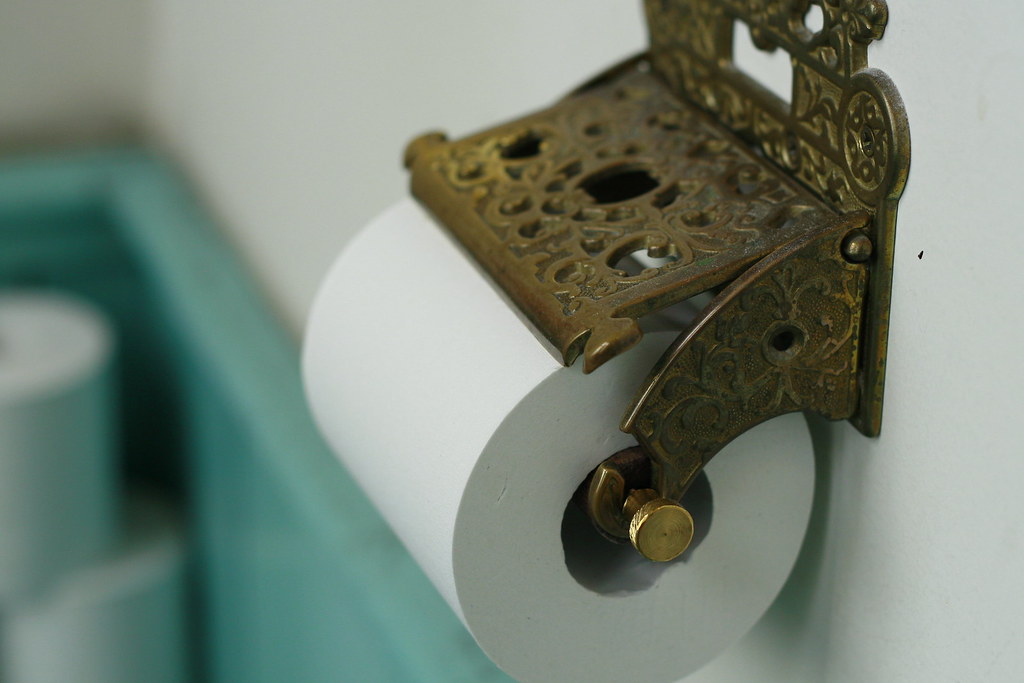Is it safe to put toilet paper in the microwave? is one of those odd enquiries and interesting experiments. Is this safe? What are the repercussions of doing this?
Toilet paper can technically be placed in the microwave, however doing so is not advised and could be harmful. When exposed to intense heat, such as that produced by a microwave, toilet paper is very flammable and is prone to readily catching fire. In order to cook or warm something, microwaves release electromagnetic waves that excite the water molecules in the meal.
Toilet paper, on the other hand, has very little moisture and doesn’t have the right characteristics to securely interact with microwave energy. When heated, toilet paper can easily catch fire, creating a fire hazard and perhaps harming the microwave and the environment around it. To ensure your safety and the longevity of your kitchen appliances, it is strongly advised to avoid putting toilet paper in the microwave.

Can you put paper towels in the microwave?
Paper towels can be used in the microwave for a number of things, like covering items to stop splatters, soaking up extra moisture, or making an improvised steaming atmosphere. However, there are a few crucial factors to remember:
- Use paper towels that are microwave-safe: Make sure the paper towels you use have a microwave safe label on them. Paper towels that are microwave-safe are made to resist the heat from microwaves without igniting or releasing hazardous chemicals.
- Avoid paper towels with bold prints or dyes: Some paper towels might have colours or inks that, when heated, might contaminate food. To reduce dangers, it is advisable to use plain, unprinted paper towels.
- Use in small doses: It’s advised to just use a small amount of paper towels while heating or steaming anything in the microwave. This avoids overheating and lessens the possibility that the paper towel will get too hot or possibly catch fire.
- Keep an eye on the paper towel: To prevent the paper towel from smoking, scorching, or igniting while it’s in the microwave, keep a constant eye on it. As soon as you see any charring or burning, turn off the microwave and take out the paper towel.
When using paper towels or any other materials in the microwave, keep in mind that microwaves come in a variety of power levels. To protect your safety, always abide by the manufacturer’s recommendations and use appropriate supervision.
Can cardboard go in the microwave?
No, you shouldn’t heat up cardboard in the microwave. Due to its flammable nature, cardboard runs the risk of igniting when exposed to the intense heat created by microwaves. Cardboard packaging may contain metals in the glue or adhesives that can ignite or harm the microwave.
Additionally, when heated, cardboard can emit toxic compounds that can contaminate food and be hazardous to human health. It is usually advisable to use microwave-safe containers or suitable substitutes for heating or cooking food rather than putting cardboard in the microwave.

What other materials should you avoid putting in the microwave?
To minimise any risks or harm to the device, it’s crucial to use caution and refrain from heating up some products in the microwave. The following objects ought to be kept out of the microwave:
- Aluminium foil, metallic cutlery, and containers with metallic accents are examples of metal items that should never be microwaved. Due to reflection and buildup of electrical currents, metal might result in sparks, fires, or damage to the interior of the microwave.
- Styrofoam: Styrofoam or other foam-based containers cannot be heated in a microwave. They may melt, deform, or release toxic substances into the food when heated.
- Plastic packaging without labels indicating microwave safety: Not every plastic container can be used in a microwave. Before cooking food in a container, it is crucial to look for labels or symbols indicating that it is microwave-safe. When heated, some polymers could emit dangerous substances.
- Paper bags: You shouldn’t put brown paper bags in the microwave, including lunch bags and packaging bags. When heated, they can catch fire or emit poisons.
- Grapes: Putting grapes in the microwave can result in the “plasma ball” effect, despite the fact that this may sound strange. Grapes have a high moisture level, which might cause sparks and perhaps harm the microwave.
- Never microwave eggs in their shells because the internal pressure can cause them to burst.
- Chilli or hot peppers: When microwaved, the volatile compounds in peppers can release into the air and irritate the throat or even make breathing difficult.
Always check the labels on containers and the manufacturer’s instructions to see if they may be microwaved. When in doubt, choose microwave-safe glass or ceramic containers and wraps or lids to seal them.
Relevant Articles
How Long To Microwave Chicken Nuggets?
Can You Microwave Potstickers?

Comments are closed